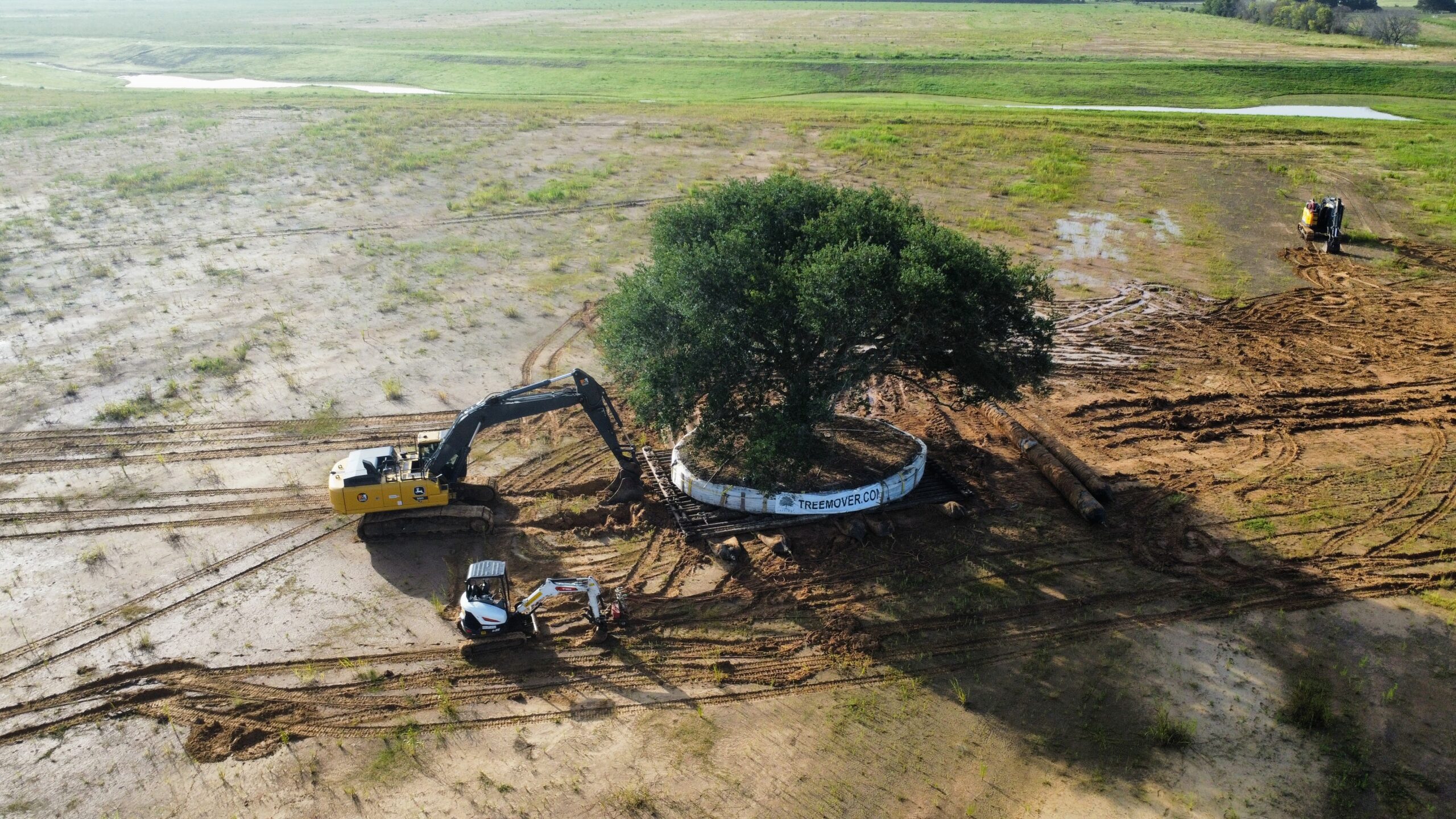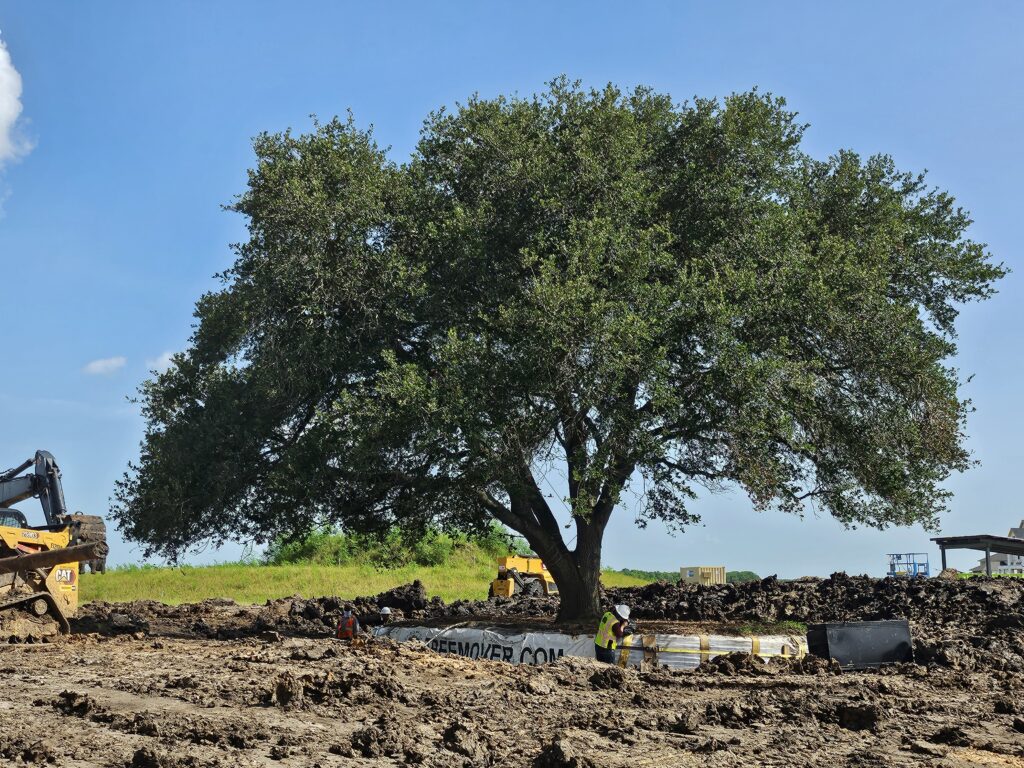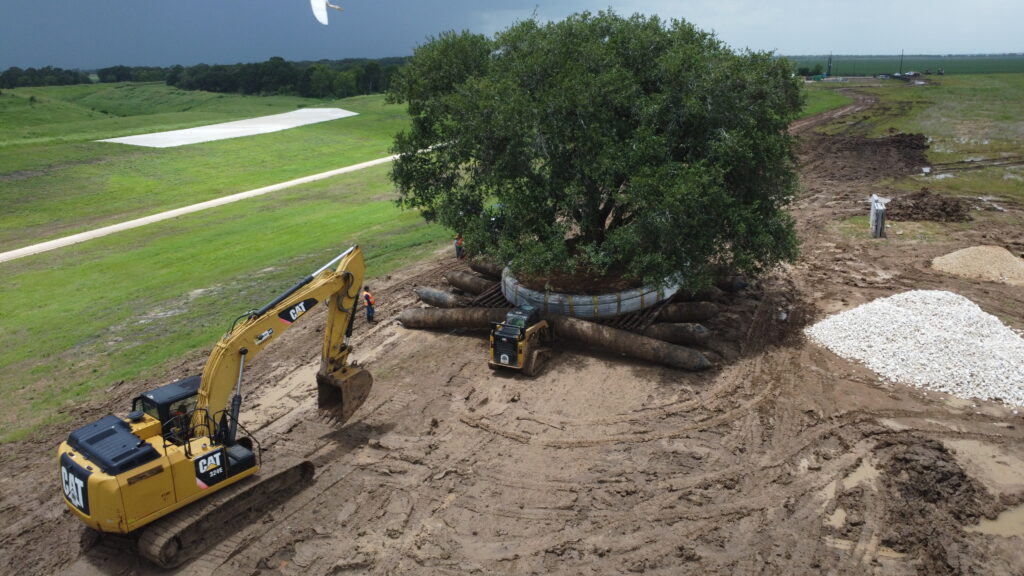
In 2019, The Signorelli Company acquired the land for what will eventually become Austin Point, a 4,700-acre mixed-use city, and the largest such development of its kind to be announced in Fort Bend County in over 40 years.
The land carries a unique history, and honoring it was essential from the start. At its center stood a remarkable historic symbol: a 128-year-old heritage oak with a canopy spread of 55 by 55 feet, a trunk diameter of 32 inches, and a root ball weighing 300,000 pounds – the equivalent of a fully grown blue whale, the largest animal ever known to live on earth.
To put that in perspective: when the tree first took root in 1897, the population of Houston was just 35,000 people. Today, Greater Houston is home to nearly 7.8 million. Fort Bend County alone is just shy of 1 million residents in 2025, with projections showing the population will double to nearly 2 million by 2050. The majestic oak has quietly witnessed more than a century of growth, and will continue to stand watch as more residents make Fort Bend County their home in the coming decades. Just like the oak, Austin Point is built with the strength to endure, designed as a community that will adapt for generations to come.
Mighty and resilient, the oak is an experienced force of nature that can play many roles in our lives. It’s the main character in countless childhood adventures, and it’s the stoic listener for young adults finding their voice. It’s the easygoing friend you can always pick up with, and it’s the constant presence welcoming you home again, no matter how long you’ve been away. It sets a scene for milestone moments, and sometimes it’s the scene-stealer without even trying.
Now, this veteran of the land has a new residence. As a living landmark in the heart of Austin Point, the heritage oak has a starring role in the story of this new regionally transformative city.

The Move: Planning, Conservation and Precision
When taking any legacy act on the road, comfort and well-being should never be compromised. Relocating the oak meant moving it more than a mile into a gathering space within Austin Point. The project involved transportation, but it was also about preservation, sustainability, and careful planning, the same principles shaping every aspect of Austin Point.
The complex effort was handled by Environmental Design, Inc. (EDI), a nationally recognized leader in large tree relocation, in partnership with Austin Point team members. EDI is known for its work with clients like the White House, Apple Park, the 9/11 Memorial, Aggie Park at Texas A&M, and Houston’s Discovery Green. Their expertise with high-profile and sensitive tree relocations made them the ideal partner for a move of this scale.
The process unfolded with meticulous care over several days, beginning with root pruning to encourage new fibrous growth and strengthen the tree’s foundation. The root ball was then encapsulated, stabilizing the soil and protecting the feeder roots that would sustain it after the move.
Next came EDI’s innovative ArborLift® system, a low ground-pressure hydraulic platform that gently raises and transports trees weighing hundreds of thousands of pounds. Using inflated pneumatic bags and a pipe-lift platform, ArborLift® distributed the oak’s enormous weight evenly across the ground, avoiding stress to the roots or damage to the surrounding site. Instead of relying on cranes that can shock or crack the root system, the oak was rolled steadily across the land until it reached its new home.

Preserving the Past, Rooted in the Future
Today, the oak stands proudly at the entrance to The 1824, Austin Point’s social hub and the heartbeat of phase one. Its 128-year-old roots now anchor a new chapter in Texas, reminding all who visit that great communities are built on strong foundations.
As a keeper of stories that traverse lifetimes, the oak will continue passing down its tales like heirlooms. We become descendants of those stories, just as future generations will inherit ours. Over time, the heritage oak will hold them in its canopy – a chronicle of life at Austin Point.